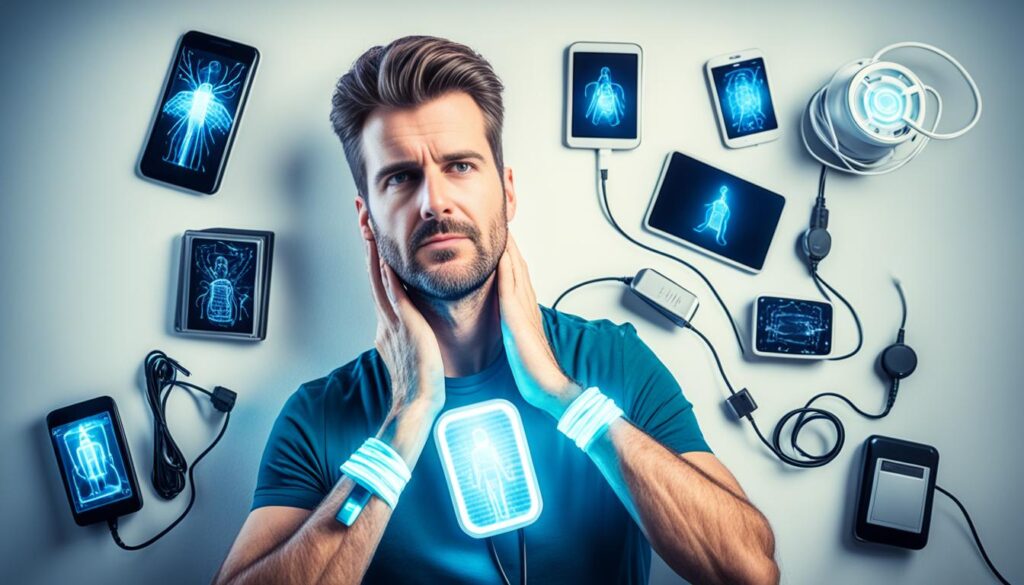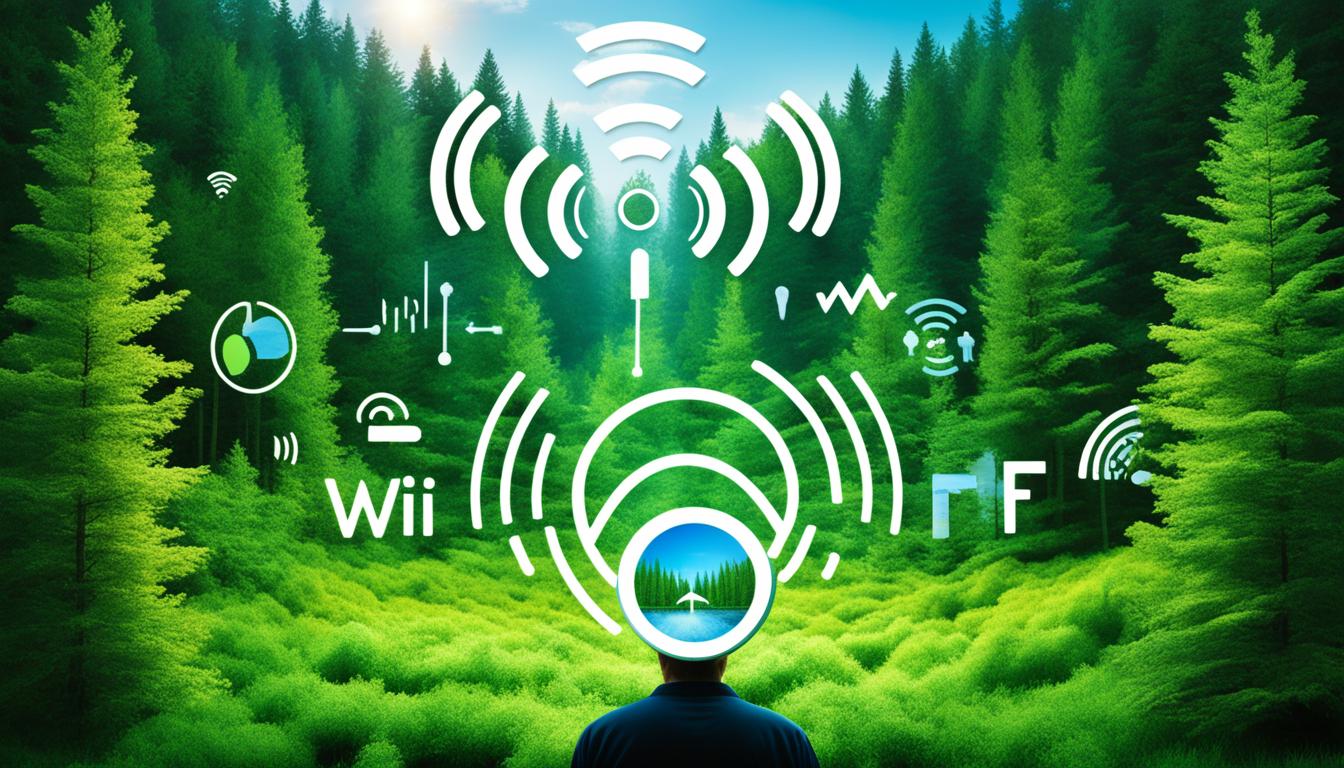Disclosure: This Post Contains Affiliate Links; We earn a commission on purchases.
In today’s tech-savvy world, Wi-Fi has become an integral part of our daily lives. From homes to offices, schools to cafes, Wi-Fi networks enable us to stay connected and access information seamlessly. However, along with the convenience come concerns about electromagnetic field (EMF) exposure from Wi-Fi devices.
There is a lot of information circulating about the potential health effects of Wi-Fi and EMF exposure, which can lead to confusion and anxiety. It’s important to separate the facts from fiction and make informed decisions about Wi-Fi usage and safety measures.
In this article, we will delve into the most relevant and factual data to gain a clear understanding of Wi-Fi EMF exposure. We will explore the potential health effects, safety tips, and protective measures you can take to minimize any potential risks. By arming yourself with accurate information, you can make informed choices about your Wi-Fi usage and promote a safe environment for yourself and your loved ones.
Before we begin, let’s take a moment to understand what electromagnetic fields are and how they relate to Wi-Fi technologies. Electromagnetic fields are generated by electronic devices that operate on electrical energy, including Wi-Fi routers and smartphones. These fields consist of both electric fields and magnetic fields, collectively known as electromagnetic fields (EMFs). Wi-Fi networks emit low-frequency EMFs, which are non-ionizing radiation and generally considered safe.
However, some individuals may experience electromagnetic sensitivity, which can manifest as various symptoms believed to be related to EMF exposure. While the scientific community continues to study this condition, it’s important to note that electromagnetic sensitivity is not recognized as a medical diagnosis in mainstream medicine. If you believe you are sensitive to EMFs, it’s essential to consult with a healthcare professional to explore potential causes and appropriate management strategies.
Key Takeaways:
- Wi-Fi devices emit electromagnetic fields (EMFs) that consist of electric and magnetic fields.
- Wi-Fi EMFs are categorized as non-ionizing radiation and generally considered safe.
- Some individuals may experience electromagnetic sensitivity, although it’s not recognized as a medical diagnosis.
- It’s important to separate facts from fiction when it comes to Wi-Fi and EMF exposure.
- Consulting with a healthcare professional is crucial if you have concerns about EMF sensitivity or potential health effects.
Outdated Cell Phone Radiation Standards: The Urgent Need for Update
When it comes to the safety of cell phones and Wi-Fi, the Federal Communications Commission (FCC) plays a crucial role in setting radiation standards to protect the public. However, the current standards, known as the Specific Absorption Rate (SAR) standard, have not been updated since 1996.
The SAR standard measures the rate at which our bodies absorb energy from RF electromagnetic fields, such as the radiation emitted by cell phones and Wi-Fi devices. With the rapid advancements in technology and the widespread use of wireless devices, it is concerning that these standards have not been revised to reflect the latest developments.
One of the key reasons for updating the SAR standards is the introduction of 5G wireless technology. 5G operates at higher frequencies and uses different signal wavelengths compared to previous generations of wireless technology. As a result, the exposure to RF energy is expected to increase, potentially impacting public health.
Additionally, the increased reliance on wireless devices, including smartphones, tablets, and other connected devices, has led to higher RF energy exposure. The SAR standards need to keep up with these changes to ensure that the public is adequately protected.
The Impact of Outdated Standards
The outdated SAR standards have far-reaching consequences. They fail to address the expanding spectrum of RF exposure and do not account for the increased usage and proximity of wireless devices in our daily lives. As a result, the existing SAR standards may underestimate the potential risks associated with long-term exposure to EMF radiation.
To protect public health, it is crucial that SAR standards are revisited and modernized. This requires comprehensive research and collaboration among regulatory bodies, scientific experts, and industry stakeholders. By updating the SAR standards, we can establish more accurate guidelines for cell phone safety and effectively mitigate the potential risks of EMF radiation.
The Urgent Need for Cell Phone Safety Guidelines
Given the ubiquitous nature of cell phones in today’s society, it is essential to provide clear and updated safety guidelines. These guidelines should address not only the SAR values but also other factors that contribute to RF energy exposure, such as proximity and duration of cell phone use.
Cell phone safety guidelines should also educate the public about practical measures to reduce exposure to EMF radiation, such as using hands-free devices, keeping phones away from the body when not in use, and limiting screen time for children.
It is important for regulatory bodies and health organizations to collaborate and establish universally accepted cell phone safety guidelines. By doing so, we can empower individuals to make informed choices about their cell phone usage and minimize their risk of exposure to EMF radiation.
The Path Forward
As technology continues to evolve, it is imperative that we prioritize the safety of wireless devices. Revisiting and updating the outdated SAR standards is a crucial step in achieving this goal.
“We must adapt our safety guidelines to keep pace with technological advancements and ensure the well-being of individuals exposed to EMF radiation.” – Dr. Jane Thompson, EMF Safety Expert
Furthermore, continued research is necessary to better understand the potential long-term health effects of EMF radiation and to develop appropriate safety measures. By staying informed and advocating for updated safety standards, we can create a safer and healthier environment for all.
Debunking EMF “Protection” Stickers and Pendants
The market is filled with a plethora of EMF “protection” stickers and pendants claiming to shield you from electromagnetic radiation. But do these products truly live up to their claims? Let’s take a closer look at the scientific rigor behind these offerings and explore why relying on established methods for reducing EMF exposure may be a more reliable path.
Many of these stickers and pendants derive their perceived effectiveness based on self-reported physiological responses. However, it’s important to note that these responses often result from a placebo effect rather than any direct EMF protection. The scientific community emphasizes the need for objective data and rigorous research when evaluating the effectiveness of such products.
Without scientific rigor, the claims made by EMF “protection” stickers and pendants remain unsubstantiated and potentially misleading.
Brands promoting EMF “protection” stickers and pendants may boast about extensive research and third-party lab testing. However, a closer examination reveals certain shortcomings, including skewed interpretations and potential increases in radiation emissions. It is imperative not to be swayed solely by marketing claims or glossy advertisements, but instead, rely on comprehensive data and independent verification.
Instead of placing unwarranted trust in unproven products, a more prudent approach is to focus on evidence-based methods for reducing EMF exposure. Incorporating simple steps like using wired connections instead of relying solely on Wi-Fi, keeping devices at a distance, and utilizing shielding techniques grounded in scientific research can be effective in minimizing potential risks.
Recommended Methods for Reducing EMF Exposure:
- Avoid prolonged use of wireless devices
- Use headphones or speakers for phone calls
- Keep devices away from the body, especially in pockets or bras
- Use airplane mode or turn off Wi-Fi when not in use
- Opt for wired connections whenever possible
- Consider using shielding techniques like EMF-blocking fabrics and materials
Remember, when it comes to EMF protection, maintaining a balanced perspective and relying on scientific evidence is crucial. By avoiding misleading claims and focusing on reducing EMF exposure through scientifically supported methods, you can take practical steps towards a healthier and safer environment.

| EMF Protection Stickers and Pendants | Scientific Rigor |
|---|---|
| Reliance on self-reported physiological responses | Lacks objective data and rigorous research |
| Claims of extensive research and third-party lab testing | Skewed interpretations and potential increased radiation emissions |
| Glossy marketing and misleading advertisements | Independent verification is essential |
| Focus on reducing EMF exposure through evidence-based methods | Practical steps towards a healthier and safer environment |
Understanding the Potential Health Effects of EMF Radiation
Extensive research conducted by the National Institute of Health (NIH) has shed light on the potential health effects of EMF radiation. These studies have revealed notable findings, including correlations between high levels of RF radiation exposure and tumor activity in rodents, specifically malignant schwannomas.
While these significant findings are concerning, it is crucial to exercise cautious extrapolation when applying these results to humans. It’s important to note that the exposure levels in these studies far exceeded what individuals typically experience in their daily lives, particularly through cell phone usage. Therefore, direct translation to human health risks must be approached with careful consideration.
Although correlations between RF radiation and tumor activity have been observed, more research is still needed to gain a comprehensive understanding of the potential risks posed to human health. Ongoing studies and continued investigation will provide valuable insights into the long-term effects of EMF radiation.
In the meantime, it’s essential to stay informed about the latest research findings and take a cautious approach when it comes to EMF exposure. Utilizing protective measures, such as maintaining a safe distance from sources of RF radiation and limiting mobile phone usage, can help minimize potential risks.
| EMF Health Effects | NIH Research Findings | Potential Risks |
|---|---|---|
| – Correlations between RF radiation and tumor activity in rodents | – Significant findings regarding malignant schwannomas | – Uncertain implications for human health |
| – Ongoing research and investigation | – Cautious extrapolation to human cell phone usage | – Limited understanding of long-term effects |
| – Importance of staying informed | – Taking precautionary measures | – Minimizing potential risks |
Continued research in the field of EMF health effects will enable a better understanding of the potential risks associated with RF radiation. Until then, adopting a prudent approach to EMF exposure can contribute to maintaining a safe and healthy environment.

Conclusion
In conclusion, it is crucial to separate fact from fiction when it comes to Wi-Fi EMF exposure. The outdated standards need to be updated to keep up with the advancements in technology. To ensure EMF radiation safety, it is important to approach unproven products like EMF “protection” stickers and pendants with skepticism, and instead prioritize established methods for reducing EMF exposure.
While the potential health effects of EMF radiation are still being studied, continued research is necessary for a better understanding of the risks involved. By staying informed about the latest findings in the field and making informed decisions, we can effectively minimize the potential risks associated with Wi-Fi EMF exposure and create a safer environment for ourselves and future generations.
Ultimately, it is up to individuals and communities to prioritize their well-being and take proactive steps in EMF protection measures. By promoting awareness, fostering informed decision-making, and encouraging further research, we can navigate the changing technological landscape while safeguarding our health and minimizing the risks of Wi-Fi EMF exposure.
Source Links
- https://slnt.com/blogs/insights/emf-radiation-fact-vs-fiction
- https://www.womenofgrace.com/blog/69414
- https://vocal.media/education/the-truth-about-emf-radiation-separating-fact-from-fiction

Subscribe to Our Newsletter










